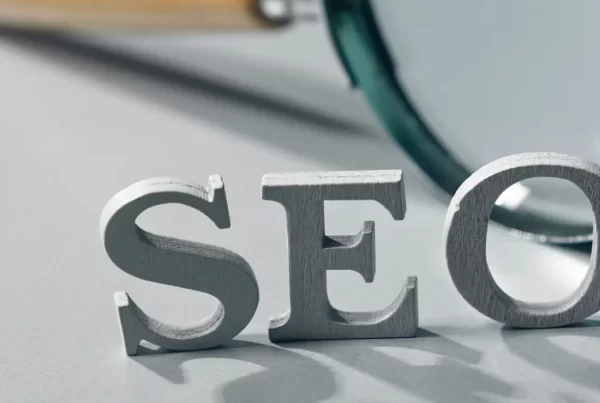Last Updated on 1 year ago by Ecem Ertürk
There may be many factors that prevent the successful strategies you have prepared for SEO from coming to life successfully. Crawler traps are also one of these factors, and it is a big problem for SEO strategies. In this structural problem, search engines remain attached to the same pages when scanned to understand and index the content. Because the search engine browser cannot access valuable content prepared for SEO, it cannot stand out in SERPs and cannot list your website correctly. Access to potential customers is quite difficult as the traffic to visit its closet is reduced. SEO agencies can work successfully on these crawler traps. They can also notice and correct existing traps while making your website compatible with SEO. Otherwise, browsers spend the budget in vain while scanning this content, and new content cannot be indexed. In addition, the quality of your website drops significantly as these traps cause duplicate content. Careful should be taken against these traps, both for the success of SEO strategies and for increased user experience.
What are Crawler Traps?

Crawler traps are a structural problem arising from the website. The search engine browser starts browsing the website, but it may encounter an infinite number of URLs from this structural problem. Having an infinite number of URLs during scanning is a problem because the browser cannot finish scanning these URLs and remains attached here. Search engines have a certain scan budget that they allocate per site, and when the browser is stuck in irrelevant URLs, it will never reach valuable content within the site. This makes it difficult to rank in SERPs and the website doesn’t stand out. Such a problem may arise on sites that usually work with the database. Crawler traps are also called spider traps, as the browser is in theory due to the browser being attached to a particular URL.
What is The Issue With Spider Traps?
Crawler traps can cause big problems when not noticed. It can prevent the browser from accessing rich and important content within the website by consuming the budget. In addition, it may affect the quality of the website because it causes duplicate content, so it is necessary to be careful with this trap.
1. Crawler Traps Cause Crawl Budget Issues
Google prepares a certain screening budget for each website. This budget determines how many pages to browse your website when scanning the search engine. Crawler traps can cause the budget to be consumed in content not related to SEO, and therefore transportation to rich content can be prevented. This creates a major disadvantage for SEO. Scanners like Googlebot may notice these spider traps, but there is no guarantee of this. In addition, although the trap is perceived by the scanner, this may be a time-consuming process and the budget may be exhausted in this process. Although the scanners of the search engines may notice the traps, they still continue to allocate a certain budget to these traps. To prevent your Seo strategy from failing, it is recommended to be prepared against crawler traps and take direct action against these traps.
2. Crawler Traps Cause Duplicate Content Issues
Crawler traps not only cause budget problems but also affect the quality of your website. The recurring content problem arises because the same pages repeat in an infinite loop. Having duplicate content on a website is an indication that that website is of low quality. Although it is likely to be noticed by browsers like Googlebot, this is not certain, so trusting the browser can be risky.
How To Identify Them?

There are some methods to notice Crawler traps. Just determine which of the URLs have valuable content and which are meaningless to scan. You should be careful about some URL patterns to detect these traps. Account-related, script-related, ordering-related, or session-related URLs should be investigated carefully. There are some methods to do these. One of them is to browse your own website rather than automated search engine browsers. Traps appear during this scan. Another way is to manually check the URL through advanced search operators. It is also possible to have URL parameters checked in the Google search console. Finally, it is an ideal method to examine your web server’s files daily to notice crawler traps.
Common Crawler Traps
Crawler traps can appear in different ways. The most common emerging traps are as follows;
1. https / subdomain redirect trap
The most common trap among Crawler traps is the hhtps / subdomain redirect trap. Old unsafe https links on the website redirect to the secure link. For example, an https link redirects the person to the home page instead of directing it to a specific page. Search engine scanners cannot detect this because the old page cannot be redirected to its new location. Googlebot and similar browsers fall into this trap, scanning the site again and again and consuming the budget without reaching valuable content. There are tools prepared to find this screening trap specifically. In addition, it is possible to find these traps manually.
2. Filter trap
A filter trap is one of the most common problems in e-commerce sites. Preferred filters for products or sorting can create a large number of unnecessary URLs. A large number of duplicate contents may appear for each filtering. Since filtering is indispensable in e-commerce sites, the emergence of this problem is almost inevitable.
3. How to fix the filter trap
Blocking filter results from Google is one of the most ideal solutions to avoid this trap. It is imperative to add a standard URL that shows the location correctly for the web page of the product of a particular category. The filters are then added to the robots.txt file. The software development team must be conscious of this type of crawler trap. It is also recommended for the security and future of your website to ensure that they receive a certain education if necessary.
4. Time trap
The time trap is also known as the calendar trap. In this problem, numerous unnecessary URLs are formed. Some search engine scanners are accomplished to notice this trap, but the budget is still spent at a serious rate, as it may take time to notice the trap. For this reason, it is important to take action to prevent this trap. Although it is difficult to notice this trap, it is not impossible to solve. All you have to do is be careful about the time software. Time software comes as a plugin, and if there is no protection in this plugin, you need to block it using the robots.txt file.
5. Infinite redirect trap
An infinite loop occurs in the infinity redirect trap problem. Search engine scanners may notice this situation, but still continue to consume budgets and reduce the quality of the website. It is relatively easy to notice this trap because it gives a routing cycle error in the browser. However, it can be difficult to notice if it is hidden inside your website. To solve this problem, all you have to do is direct the page to infinity to the right place.
6. Session url trap
Session URLs are preferred to collect visitor data. Each session has a unique identity and this data is also stored in cookies. If this data is not stored in the correct place, the URL contains a session ID. Each time the website receives a visit, it creates a new identity. Then, this ID is added to the URL and creates a new page. It means that it creates new pages by getting a new ID and URL every time a browser enters to scan the site. It is quite easy to manually notice this trap by disabling cookies, but there are also tools already available to notice and solve this trap. It is easy to manage this problem because it can be quickly fixed rather than the others.












